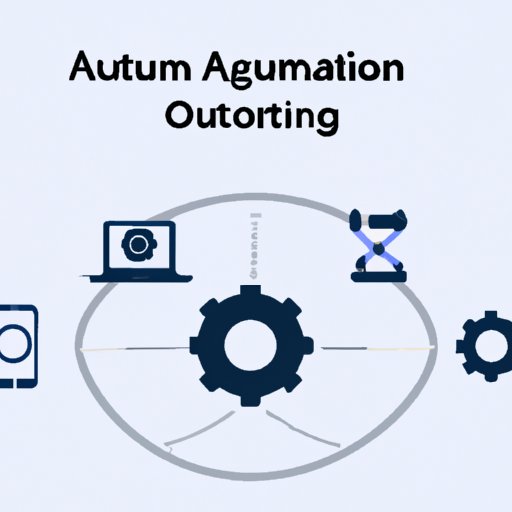Introduction
Automated software is a type of software program that can be programmed to run certain tasks automatically. It is used in many industries and sectors to streamline processes and improve efficiency. Automated software can be used to automate repetitive or time-consuming tasks such as data entry, report generation, and customer service inquiries.
Definition of Automated Software
Automated software is a computer program that can be programmed to perform certain tasks autonomously. It is an efficient way to automate repetitive or time-consuming tasks, such as data entry, report generation, customer service inquiries, and more. Automated software can also be used to automate processes across multiple systems and departments to increase productivity.
Benefits of Automated Software
The main benefit of automated software is its ability to save time and money. Automated software can reduce human error, increase accuracy, and improve efficiency by automating tedious tasks. Automated software can also help to reduce costs associated with labor, materials, and other resources. Additionally, automated software can help to improve customer satisfaction by providing faster responses to inquiries and improving the overall customer experience.
Overview of Automated Software
Automated software comes in many forms, including desktop applications, web-based applications, and mobile applications. Desktop applications are programs that are installed on computers and are used for specific tasks, such as accounting or data entry. Web-based applications are accessed through web browsers and can be used for a variety of tasks, such as customer service and online shopping. Mobile applications are apps that are installed on smartphones and tablets and can be used for tasks such as social media management or messaging.
Types of Automated Software
There are many types of automated software, including robotic process automation (RPA), machine learning, natural language processing (NLP), and artificial intelligence (AI). RPA is a type of software that can be programmed to perform specific tasks, such as data entry or report generation. Machine learning is a type of software that uses algorithms to learn from data and improve performance over time. NLP is a type of software that enables machines to understand and interpret human language. AI is a type of software that enables machines to think and act like humans.
Key Features of Automated Software
Automated software typically has several key features, including data extraction, task automation, workflow automation, and analytics. Data extraction refers to the ability of automated software to extract data from various sources, such as databases or websites. Task automation refers to the ability of automated software to automate repetitive tasks, such as data entry or report generation. Workflow automation refers to the ability of automated software to automate complex processes across multiple systems and departments. Analytics refer to the ability of automated software to analyze data and generate reports.

Automated Software in Business Context
Automated software can be used in a variety of business contexts, from customer service to marketing to finance. In customer service, automated software can be used to answer customer inquiries, handle customer complaints, and provide product recommendations. In marketing, automated software can be used to manage campaigns, track website analytics, and generate leads. In finance, automated software can be used to process payments, generate invoices, and track expenses.
Use Cases for Automated Software
Automated software can be used in many different ways, depending on the needs of the organization. For example, automated software can be used to monitor and respond to customer inquiries in real-time, automate complex workflows across multiple systems and departments, and generate reports based on data analysis. Automated software can also be used to automate mundane tasks, such as data entry or report generation.

Benefits of Automated Software for Businesses
Automated software can provide many benefits to businesses, including improved efficiency, increased accuracy, reduced costs, and improved customer satisfaction. Automated software can help to streamline processes, reduce errors, and save time and money. Additionally, automated software can help to improve customer service by providing faster responses to inquiries and improving the overall customer experience.
Automation and Quality Assurance
Automated software can also be used for quality assurance purposes. Automated testing is a type of software testing that uses automated tools to test code for accuracy and reliability. Continuous integration is a type of software development practice that involves regularly merging code changes into a shared code repository. Both automated testing and continuous integration can help to ensure that code is of high quality and functioning properly.
Implementing Automated Software Solutions
When implementing automated software solutions, it is important to identify automation opportunities and consider the potential benefits and risks. Organizations should assess their current processes and identify areas where automation could be beneficial. Additionally, organizations should consider the cost, complexity, and timeline of implementation when selecting an automated software solution.

The Future of Automated Software
The future of automated software looks promising, with trends such as cloud computing, the Internet of Things (IoT), and machine learning continuing to evolve and gain popularity. Additionally, automated software will continue to become more sophisticated, enabling businesses to automate more complex tasks. Despite the potential benefits, there are also challenges associated with automated software, such as security concerns and the need for skilled personnel to operate and maintain automated systems.
Conclusion
Automated software is an essential tool for businesses looking to streamline processes and improve efficiency. Automated software can be used to automate repetitive or time-consuming tasks, such as data entry, report generation, and customer service inquiries. There are many types of automated software, each with its own set of features and use cases. Automated software can also be used for quality assurance purposes, such as automated testing and continuous integration. When implementing automated software solutions, organizations should consider the potential benefits and risks associated with automation. The future of automated software looks promising, with trends such as cloud computing, the Internet of Things, and machine learning continuing to evolve and gain popularity.
(Note: Is this article not meeting your expectations? Do you have knowledge or insights to share? Unlock new opportunities and expand your reach by joining our authors team. Click Registration to join us and share your expertise with our readers.)
